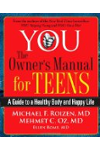If you suffer from severe cramps there are a few things you can try to relieve them. Exercise and healthy diet choices can be effective; you can also try taking two of the 200-milligram doses or one of the two 400-milligram dose of Advil or Motrin every six hours, or four times a day) can keep your body from making so much prostaglandin. Acetaminophen (Tylenol) does not block the hormone that causes cramps, so if you feel better when taking Tylenol, the cramps are going away on their own anyway. Lucky you! If the ibuprofen does not work, ask your doctor for another NSAID called naproxen, which comes in 550-milligram tablets and needs to be taken in the morning and at night to work. The trick is not to miss any doses, as once your body makes the prostaglandins, you get the cramps. If these medicines in the right doses are not effective, the next step is another prescription medicine called mefenamic acid (brand name Ponstel). This drug comes in 250-milligram tablets; you take two initially and then one every six hours. Another option would be to start a birth control pill, which suppress ovulation and thins out your uterus lining; both the egg sac and the uterine lining are sources of those pain-inducing, cramp-causing prostaglandins.

More About this Book
YOU: The Owner's Manual for Teens: A Guide to a Healthy Body and Happy Life
Continue Learning about Menstruation
Important: This content reflects information from various individuals and organizations and may offer alternative or opposing points of view. It should not be used for medical advice, diagnosis or treatment. As always, you should consult with your healthcare provider about your specific health needs.








